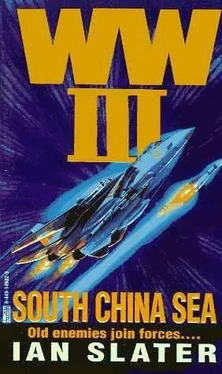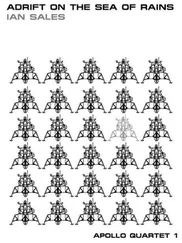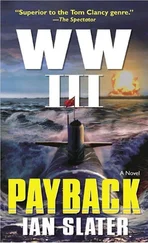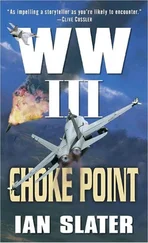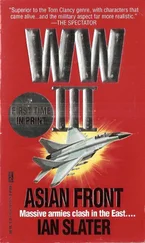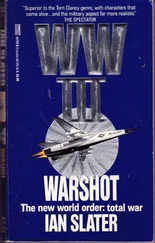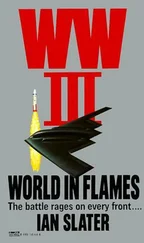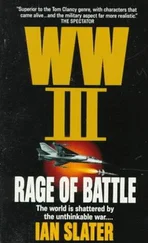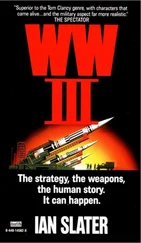Closer now. the Vietnamese Osa fired a second missile, its backblast on the stern immediately raising the Osa’s sharp bow so that she gained a knot or two. The Vietnamese captain saw one of the Huch’uan-class hydrofoils leap into the air and crash down again, its portside foil shattered along with the midships and cockpit — now a crushed pile of smoking metal.
The Chinese hydrofoil had turned hard astarboard as the orders were given by its skipper to abandon ship. The second Chinese hydrofoil fired its starboard twenty-one-inch-diameter torpedo from its large, corrugated housing, and now its 12.7mm machine-gun stations opened up against the fast-turning Vietnamese boats which, suddenly slowing near the site of the injured and sinking Huch’uan hydrofoil, machine-gunned all those Chinese in the water.
“Great wall of iron!” snorted one of the Vietnamese skippers, motioning toward the detritus of wreckage and bodies. The second Chinese hydrofoil had already fired its torpedoes, but they were easily avoided by simply opening the throttle, allowing the Vietnamese Osas to skid in wide thirty-five-plus-knot semicircles. There was some stray machine-gun fire from the Chinese—12.7mm tracer playing about the Osas, hitting the Monkey Island, or clear-weather bridge, on one of the Vietnamese boats, but doing no more damage than that.
* * *
Hanoi now broadcast to the world via an accommodating CNN that Vietnam had “punished Chinese aggressors” in Vietnamese waters.
In reply, the Chinese vehemently denied that they had violated Vietnamese waters, but stated that “the peace-loving People’s Liberation Navy” had been patrolling, as was its right, within two hundred miles of its coastline, which included the big island of Hainan, and from Hainan it had every right to patrol another two hundred miles, as Hainan was indisputably Chinese territory. Beijing immediately requested a meeting of the U.N. Security Council to impose sanctions and other disciplinary measures against the “imperialist aggressions of the Republic of Vietnam bandits.”
Vietnam followed suit and asked for U.N. sanctions against China. The fear on both sides of the dispute — and well-founded fear — was that the issue would be ponderously delayed while no action would be taken. In the meantime, both Beijing and Hanoi were accusing each other of violating the other’s zone of ownership. It was a very capitalist argument, as seen by the Wall Street Journal:
In New York today, a U.N. meeting of Southeast Asian and East Asian nations called to decide who owns what in the oil-rich archipelagos of the South China Sea ended in uproar as the Chinese and Vietnamese representatives came to blows over ownership of the disputed islands.
As well as being rich in oil and natural gas deposits, the islands, the Paracels to the northwest and the Spratlys in the southeast, are also strategically vital to naval and mercantile routes to and from Japan and the United States.
The U.S. State Department is closely monitoring the talks, which it hopes will resume on Monday. Moscow and Tokyo are also watching the talks closely, as the outcome could have serious and wide-ranging geopolitical implications for all island disputes, particularly the so-called “Northern Territories” islands in contention between Russia and Japan.
Japan
It was 11:55 p.m. — 2355 hours on the clock at the Japanese Intelligence headquarters in Tokyo — and Henry Wray of the U.S. Central Intelligence Agency sat quietly enjoying a cigarette, something he couldn’t do in Langley, Virginia, because of the strict no-smoking laws. His two Japanese hosts lit up as well. At 11:57 he watched his Japanese counterpart turn up the volume of the Sanyo shortwave receiver. At 11:58 two officers of the JDF, Japanese Defense Force, entered the cork-lined room, bowed to the civilians — four in all — from Japanese intelligence, and took their seats, the red light of the tape machine signaling it had already begun. At precisely twelve midnight the transmission from somewhere in North Korea began — four-digit numbers until 0020, when the code abruptly finished.
“All we need now,” Wray said, “is their onetime pad.”
“If that’s what they are using,” his Japanese host replied.
“Hmm… it’s what I’d use,” Wray told them. “You people are so far ahead in computers, I wouldn’t run a network on computer digitization. I’d be afraid you’d descramble it in a couple of weeks.”
“We’ve been trying for months, Mr. Wray.”
“Call me Henry.” He turned to the two officers from the JDF. “How about infiltration of the Chongryun?” It was a large expatriate pro-North Korean organization in Japan that raised millions of yen for Pyongyang. Nearly ten percent of all North Korea’s urgently needed foreign exchange was from Korean workers’ remittances abroad.
“It and others,” the Japanese said. “Problem is, we have no idea how many North Koreans they are broadcasting to.”
Whatever the number of agents listening, the CIA and Japanese Intelligence knew that by now there must be a large organization of illegals, as well as those who had immigrant or visitor worker status, in the pay of Pyongyang. Should hostilities ever break out, either domestically in Japan or between Japan and North Korea, the Chongryun’s association of North Koreans and deep cover agents would come out en masse like ants from a nest to sow confusion aimed particularly at Japanese transport and communication networks.
The Chinese invasion of Vietnam began at 0300 hours, the first crossings made on a four-mile front through a marshy area ten miles north of the Vietnamese town of Lang Son and on the left flank at the border town of Dong Dang. All three divisions used in the attack, about 41,000 PLA ChiCom regulars, had already traveled from Nanning in the Chengdu military region by rail to Pingxiang, near the Chinese-Vietnamese border. In the Vietnam War it had been a favorite staging area for NVA regulars to take possession of Chinese-shipped arms and munitions. Now, in this latest chapter of the long border battle between the two countries, Pingxiang once again became the jump-off point for one country’s invasion of the other. The Chinese forces were intent on overrunning the jungle-covered hills before Lang Son and the plains beyond, which ran down to the Red River delta and the Gulf of Tonkin seaport of Haiphong.
The Chinese were asked by the Secretary General of the U.N. “to disengage and withdraw immediately” from the border areas. But China, citing the “pirate actions of the Vietnamese imperialists” against a Chinese-owned oil rig and drill site in the South China Sea, insisted that Vietnam’s actions amounted to nothing less than “an act of war.”
The U.N. Secretary General’s office pointed out to Beijing that in fact both Chinese-U.S. venture sites were not within the two-hundred-mile economic zone of China. China disputed this, replying angrily that several joint Chinese-U.S. ventures in the Paracels were within two hundred miles of the coastline of the big Chinese island of Hainan, and that MV Chical 7, while beyond the two-hundred-mile zone, was historically owned by China, as Chinese fishermen a century ago had been there first to fish and to use the islands and reefs in the South China Sea for repairs and the like. “Furthermore,” a statement from Beijing added, if the “imperialist Vietnamese” did not remove their equipment and men from all the islands in the South China Sea, these would be seized by the PLA, as they “historically belong to the peace-loving Chinese people.”
Hanoi retorted that this “is typical of the warmongering imperialists in Beijing — who arrogantly aggrandize the territories by intimidation and threat”—and that if China did not recall its three divisions back to Chengdu, the Republic of Vietnam would have no alternative but to “repulse the Chinese with all available forces.”
Читать дальше
